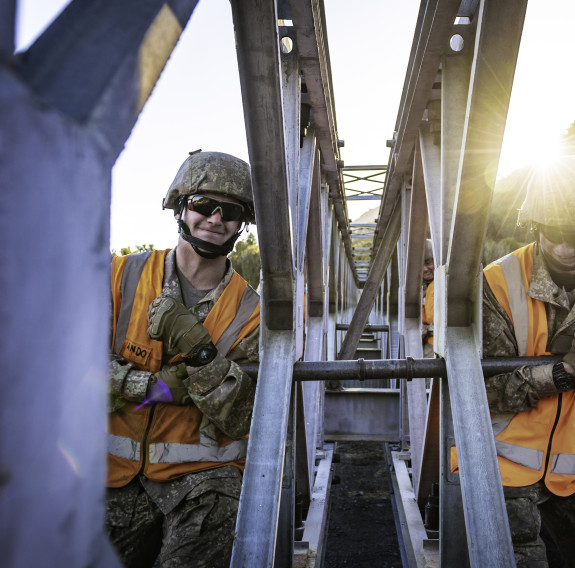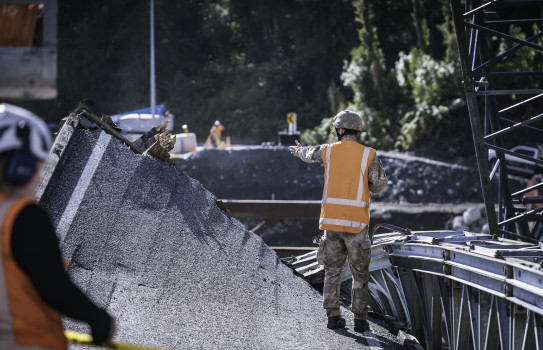Tautoko tāngata, tautoko hapori
Supporting people & communities
We stand ready and are here to help.
The Army has approximately 4,500 full-time personnel. We have disciplined forces and one of the largest fleets of vehicles in New Zealand. Our resources are on a scale that not many civilian authorities can match, and we're available at short notice when a crisis happens. It could be in New Zealand, or it could be for our Pacific neighbours.
Government agencies, such as the National Maritime Coordination Centre or National Emergency Management Agency, will look at a situation, like a flood, or a fire and ask themselves: what is the best way to solve this situation? When it’s on a large scale, or if it is remote and inaccessible, it could be that the Army has the skills and equipment to respond to the situation.
A good example is fighting forest fires. We’ve joined forces with Fire and Emergency New Zealand to tackle large-scale forest fires, such as the Port Hills and Nelson fires. When a community is flooded, our personnel rescue people, survey damage, and deliver Government assessment teams into affected areas. In Westland, our Army engineers constructed a 170-metre Bailey Bridge over the Waiho River after floods ripped away the existing bridge.
Community support is not just about emergencies – it’s about being a good community partner. The Army has worked with district health boards and undertaken free outreach dental care in rural New Zealand communities, targeting areas with limited health care.
The Army helps to ensure our fighting heritage – and the men and women who served during the two World Wars and other contemporary conflicts - are not forgotten. Our veterans and what they have done for New Zealand is important to the Army. We support the Royal New Zealand Returned and Services’ Association (RNZRSA) with commemorative events in New Zealand, as well as major commemorations overseas, such as Gallipoli. The four years of commemoration of the centenary of World War I, called WW100, was a major undertaking for the Army across New Zealand, Turkey and Europe.
While we remember and acknowledge the past, we also look to the future. As a major New Zealand employer, we provide New Zealanders with satisfying careers that supports not only those individuals, but the communities they live in. A large military camp, such as Linton or Burnham, has hundreds of personnel living and working on base, and this boosts local economies.
The Army works to support New Zealand’s youth because we are a progressive employer and are keen to showcase we can offer. The market for skilled youth is competitive, and we’d like New Zealand’s future leaders to see the Army as a promising and fulfilling career. The Army collaborates in programmes such as the New Zealand Cadet Forces and the Limited Service Volunteers. These programmes, which include motivational training and valuable life skills, make a difference to the lives of youth and in their communities.


